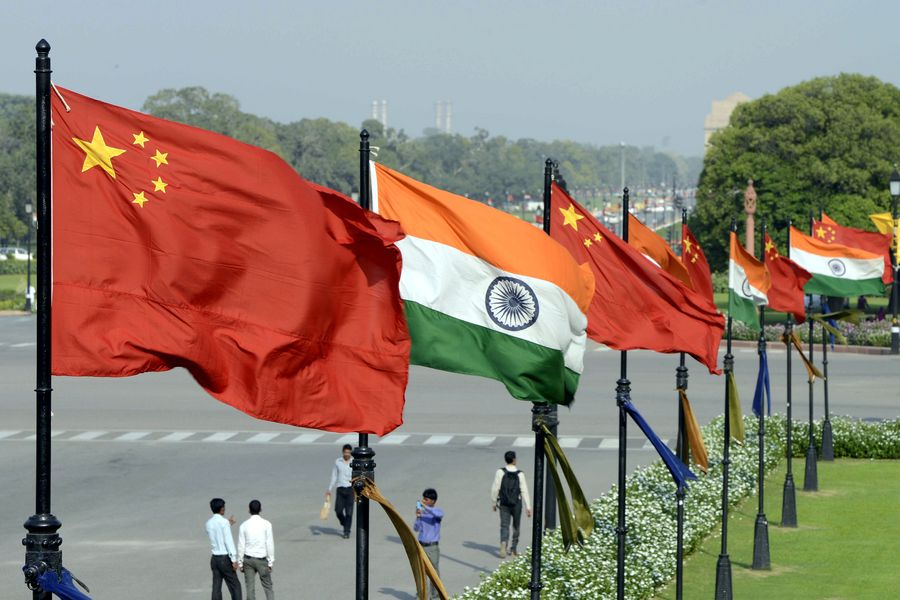
Indian and Chinese national flags flutter side by side at the Raisina hills in New Delhi, India, in this file photo. [Photo/Xinhua]
This is an editorial from China Daily.
The Indian military has reportedly authorized its soldiers can fire their weapons in any confrontation with their People's Liberation Army counterparts along the Line of Actual Control on the border between the two neighbors.
While the message was "clear" that authorization was given, it was ambiguous when it comes to the specific conditions warranting the use of firearms. That is precisely where the danger lies.
According to multiple Indian media reports, New Delhi told Beijing if PLA troops "come close" or "cross the line", Indian soldiers will fire at them. And an Indian official was quoted as saying, "Distance is dependent on the conditions like day or night, location and so on …"
Such a message may cater to the nationalist clamor inside India, but may prove counterproductive when it comes to addressing the thorny border issues at hand. On the contrary, it may change the nature of the standoff between the two militaries, and could escalate the cost of future frictions.
Suppose in the "primitive" Galwan valley clash, where soldiers of both sides used fists, rocks and batons in a fatal scuffle, if the clashing troops had been authorized to fire at each other, the toll would have been much heavier.
The shots that were reportedly fired on the banks of Pangong Lake were just warning ones. Now that frontline commanders have been given the green light to use firearms when they deem necessary, considering the negative atmosphere accumulated during the protracted standoff, in addition to the hostility incited by previous conflicts, as well as the potential for misjudgment, the probability of more violent, more costly encounters has dramatically increased.
This is inconsistent with the stated goals of both governments to pursue peace and their corresponding efforts to negotiate complete disengagement at all friction points and ensure full restoration of peace and tranquility along the border.
On Sept 21, the sixth corps commander-level talks between Chinese and Indian militaries agreed to strengthen on-the-spot liaison, avoid misunderstanding and misjudgment, stop deploying additional troops to the front line, not unilaterally change the status quo, and refrain from taking any moves that complicate the situation.
The latest message from New Delhi, however, may undermine the previous constructive consensus by allowing Indian troops to escalate the form of conflict based on a possibly erroneous assessment of the state of affairs. It is irresponsible to give such an order without a well-defined protocol, and very dangerous in the absence of proper on-the-spot communication.
Considering both governments' stated aspiration for peace and the increasing cost of the military standoff as winter draws closer, the two militaries should make every endeavor to deescalate tensions in border areas as soon and as much as possible.

 中文
中文





